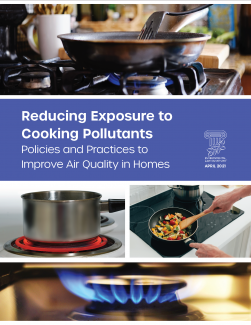
Cooking in a home kitchen produces air pollutants. While some of these pollutants are perceptible in the form of smoke or odors, others – including combustion gases and ultrafine particles – are not as obvious. Cooking-related pollutants such as particulate matter and nitrogen dioxide are linked to human health impacts including respiratory problems and cardiovascular disease. People who are at greater risk of harm from exposure to pollutants from cooking include children, older adults, people with certain underlying conditions, and those who have been socially or economically disadvantaged.
Fortunately, there are ways to address this widespread problem, starting with ventilation. Local ventilation systems in kitchens (e.g., vented range hoods) can effectively remove cooking-related pollutants at or near their source, before they have a chance to mix with the rest of the air inside a home. However, many people remain unaware of this problem, and new homes are still being built without adequate kitchen ventilation.
Thus, many states, localities, and tribes can benefit from policies and programs that reduce exposure to pollutants from cooking. This report supports such efforts by describing building codes and other policies to ensure new and renovated homes have kitchen ventilation that can effectively reduce exposure. The report also notes opportunities to improve kitchen ventilation and reduce exposure in the existing housing stock, such as through housing codes that cover rental housing, and through funding programs that could be tapped to assist lower-income families.
This report and other policy resources on indoor environmental quality are available through ELI’s Indoor Environments program: http://www.eli.org/buildings.